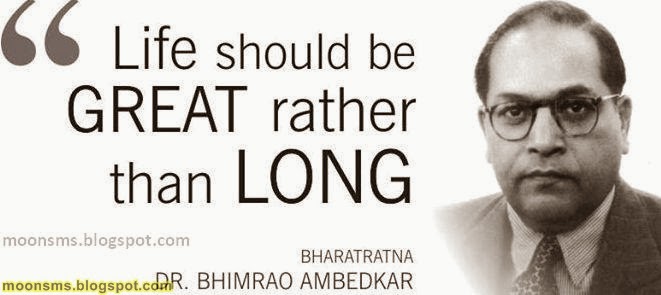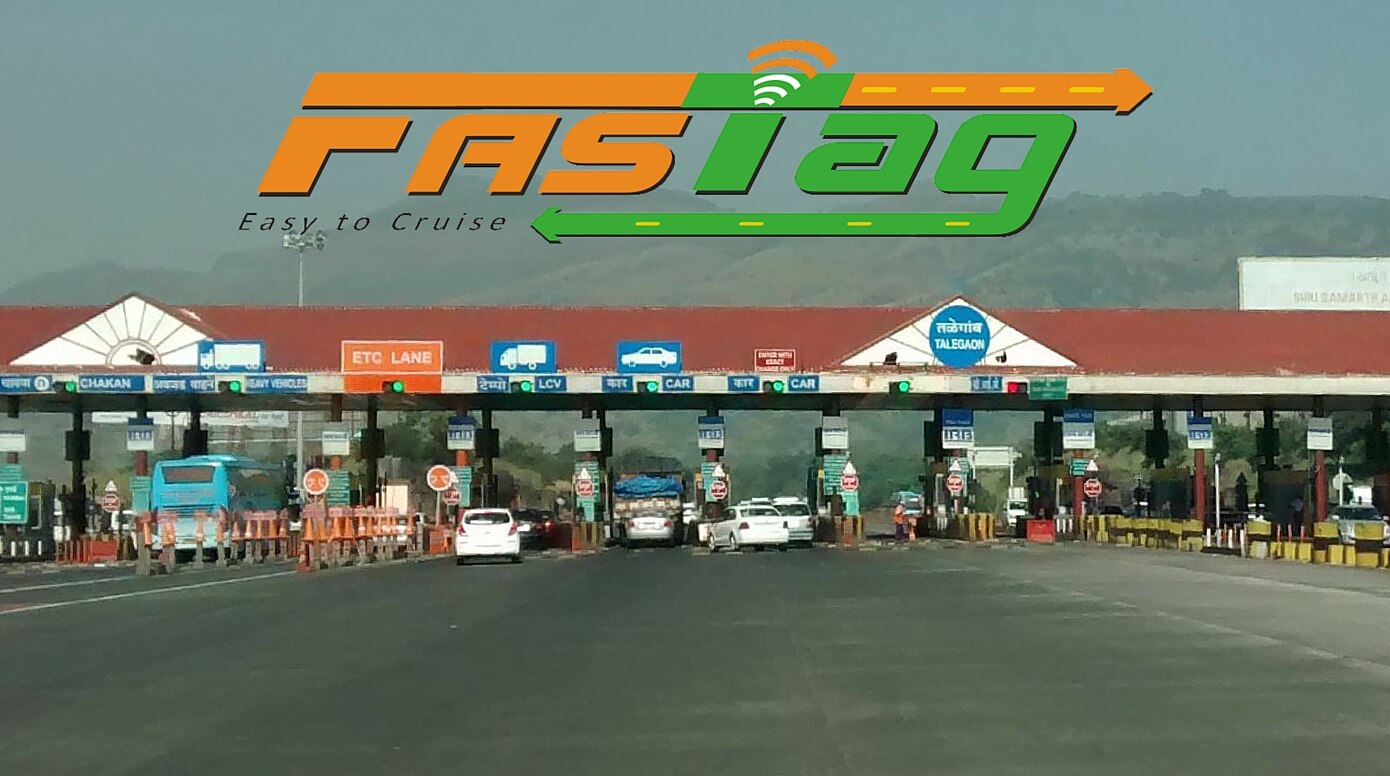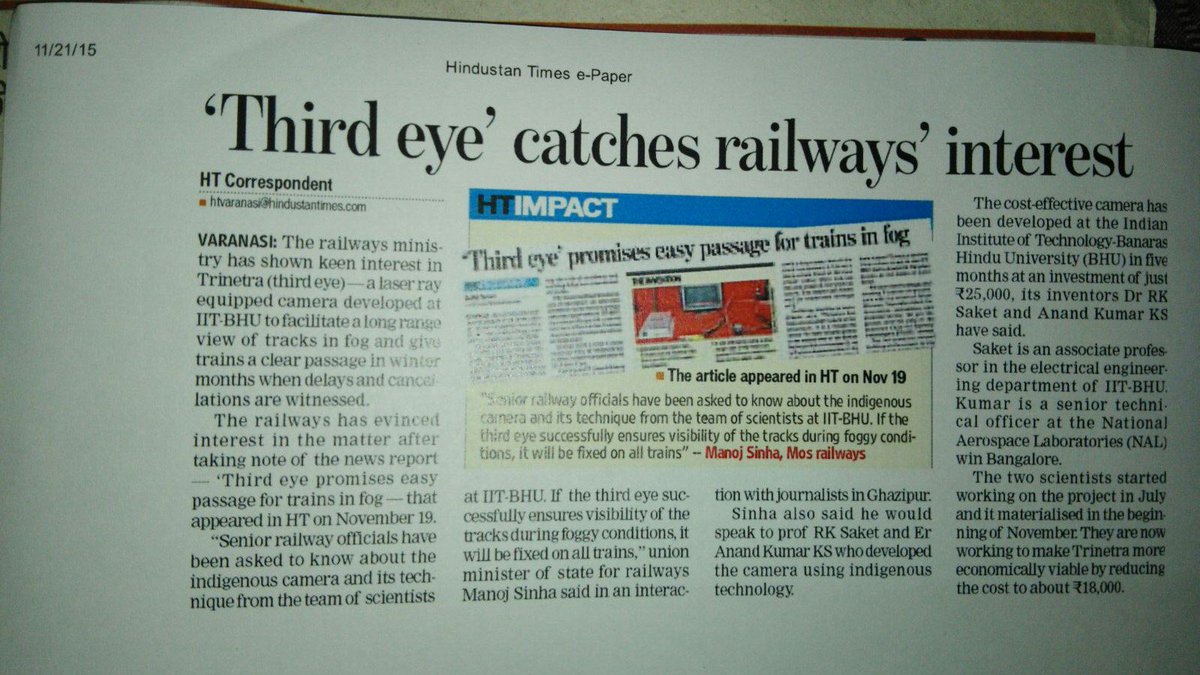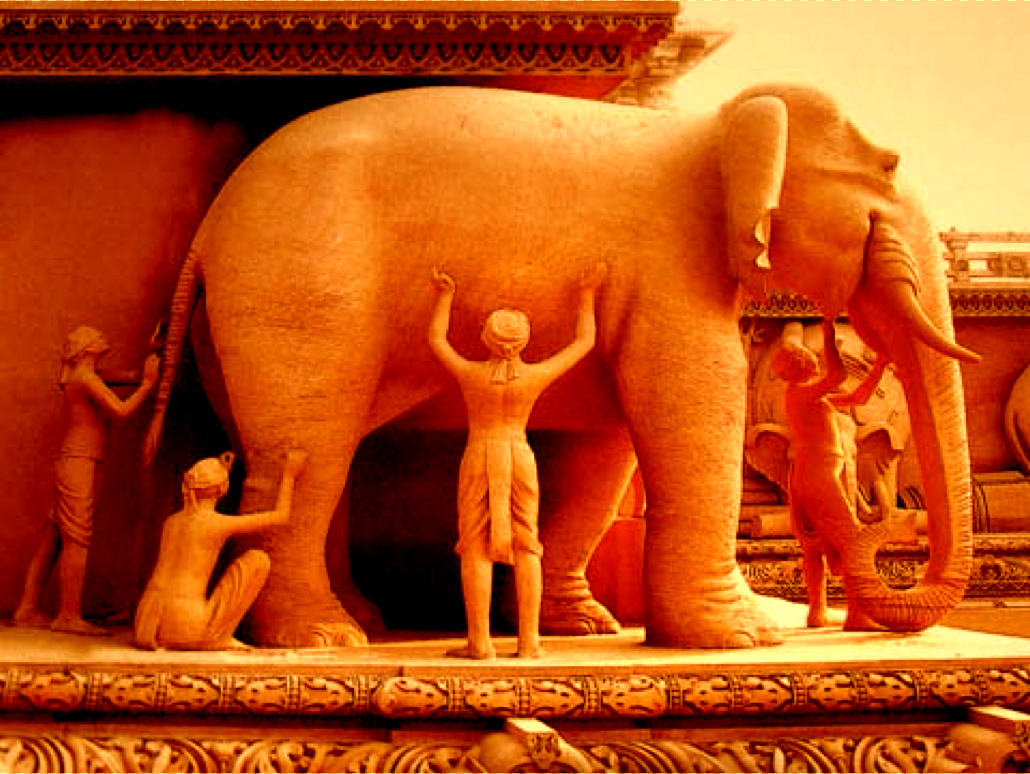This is all you wanted to know series which I have started in which 10 topics will be discussed on YOUTUBE ..although I am also sharing the content in text form for convenience !!!
#1. Babasaheb Ambedkar
#1. Babasaheb Ambedkar

1.
Bahishkrit Hitakarini
Sabha was the first
organization formed by Dr. Ambedkar in 1924.
2.
The First Round Table
Conference was convened in London on November 12, 1930. The depressed classes
were represented by Dr. B.R. Ambedkar and Rao Bahadur Srinivasan.
3.
Ambedkar formed the Independent Labour Party (ILP) in
August, 1936, which participated in
the provincial elections of Bombay and won 13 seats out of 15 seats reserved
for scheduled castes. Independent Labour Party was transformed by Ambedkar as
the All India Scheduled Castes
Federation in 1942. It was a political
party which participated in the general elections of 1946 but was completely
defeated.
4.
Ambedkar was opposed to
the strike by civil servants. For
him strike is nothing more than a breach of contract of service. It is only a
civil wrong not a crime.
5.
In July 1942, Ambedkar
was appointed the member of Executive Council of Viceroy as a Labour
member. He resigned from this post in May 1946.
6.
In January, 1920,Ambedkar
had also started a weekly paper called ‘Mooknayak‘
(Leader of the Dumb) to champion the cause of the depressed classes in India.
7.
Some of his famous books
include-The Untouchable: Who are They and Why They Have Become
Untouchables; Buddha and His Dhamma; ‘The Rise and Fall of Hindu Women‘, ‘Emancipation of Untouchables’, ‘The Evolution of Provincial Finance in British India’; ‘Pakistan or Partition of India‘, ‘Thoughts on Linguistic States’, etc.
8.
Ambedkar was appointed as the first Law Minister of Independent India, but he resigned from the Cabinet on September 1951 due to differences
with Nehru on the Hindu Code Bill.
9.
Ambedkar was first
elected to the Constituent Assembly from Bengal but he lost his seat after the
partition. However, he was chosen
by the Bombay Congress Legislative Party in place of M.R. Jaykar who resigned
earlier. It should be noted that he was defeated earlier in the election of
Constituent Assembly in Bombay. It is interesting to note that in
his interview with Cabinet Mission on April 5, 1946, Ambedkar opposed the idea
of Constituent Assembly as he feared it would be dominated by High Caste
Hindus.
10.
Ambedkar was elected as
the Chairman of the Drafting Committee of the Constituent
Assembly. He is called the father of the Indian Constitution.
However, K.V. Rao was of the
opinion that Ambedkar was not the father but mother of the Indian
Constitution as the vital
decisions about the Constitution were taken by Nehru and Patel, and Ambedkar
followed the same.
11.
Ambedkar was defeated in
the election to the Lok Sabha in 1952 mainly due to his advocacy of partition
of Kashmir. However, he was elected as a member of Rajya Sabha from Maharashtra
in March 1952. In May 1954, he again contested in the by-election to Lok Sabha
but was defeated again. He realised that a party which has no base in rural
areas has no future.
12.
Ambedkar
considered the Right
to Constitutional Remedy as the Soul of the Constitution and Union of India as “indestructible union of
destructible states”.
13.
Ambedkar converted to Buddhism
on October 14, 1956. He died on December 6, 1956 at Delhi due to severe
diabetic neurosis.
14.
After
his death, his political party Scheduled Caste Federation was renamed as Republican Party of India in 1957 by his
followers.
--------------------------------------------------------------------------------------------------------------------------
#2 Masala Bonds

Masala bonds are rupee denominated overseas
bonds. Here are key notable points about Masala Bonds.
·
Such
bonds are Rupee denominated. When an Indian company issues Rupee denominated
Bond, it is obviously shielded against the risk of
currency exchange rate aberrations. The foreign exchange risk is
on foreign investors rather.
·
The key
advantages of Masala Bonds are as follows:
·
Firstly, they help to internationalize the Indian Rupee and deepen Indian
Financial system.
·
Secondly, they diversify the funding resources of Indian
companies.
·
Thirdly, they may help to bring down the cost of borrowing and cost of
capital.
·
Fourthly, allowing Masala Bonds is considered to be a small step towards
full convertibility of Rupee.
·
Fifthly,
such bonds would support towards stability of rupee.
·
First
Masala Bond was issued by International Finance Corporation (IFC) in 2013. So
far, no Indian company has released such Bonds.
·
The
analogous bonds of China are called “Dim sum” while those of Japan are called
“Samurai” bonds.
·
The
Indian companies are allowed to raise a maximum of $750 million per year
through masala bonds with a minimum maturity of five years.
-----------------------------------------------------------------------------------------------------------------------------------
#3 Project Saksham

The Project SAKSHAM is a New Indirect Tax Network (Systems
Integration) of the Central Board of Excise and Customs (CBEC).
It seeks to bolster the information technology network for the
new Goods and Services Tax (GST) regime that the Union Government intends to
roll out from 1st April 2017.
The Project SAKSHAM will help in
·
Integration of CBEC IT
systems with the Goods and Services Tax Network (GSTN).
·
Extension
of Indian Customs Single
Window Interface for Facilitating Trade (SWIFT)
·
Other taxpayer-friendly
initiatives under Digital India and Ease of Doing Business of CBEC.
Background
·
With the implementation of
GST, the Union government expects the number of taxpayers under indirect tax
laws to increase to about 65 lakh from the
current 36 lakh.
·
CBEC’s IT systems need to
integrate with the GSTN for processing of registration, payment and returns
data sent by GSTN systems to CBEC.
·
It will also act as
a front-end for other modules like audit, appeal and investigation.
However, there is no overlap in the GST-related systems of GSTN and CBEC.
·
IT infrastructure is also
required for continuation of CBEC’s e-services in customs, central excise and
service tax, implementation of taxpayer services, extension of SWIFT initiative
and integration with government initiatives such as e-Taal, e-Nivesh
and e-Sign.
------------------------------------------------------------------------------------------------------------------------------------
#4 Project Insight
The Income Tax department is planning to implement the
first phase of ‘Project Insight’ from May 2017 to monitor high
value transactions, with a view to curbing the circulation of black money.
This project has been initiated for data mining, collection,
collation and processing of such information for effective risk management with
a view to widening and deepening tax base.
Key Facts
·
‘Project Insight’ is an integrated
platform that will utilize
vast amount of information easily available on social media to conduct raids
online rather than traditional way of conducting random searches, known as tax
raids.
·
It will use data mining, big data and analytics to scoop out tax evaders from
social media platforms like Facebook, Twitter and Instagram.
·
The Permanent Account
Number (PAN) will be the unique identifier is used by the Income Tax department
to link and analyse various transactions relating to the tax payers.
·
This will enhance the
department’s ability to monitor the flow of funds and will provide an audit
trail of high value transactions and curb circulation of black money
·
The ‘Project Insight’ will be implemented in phased manner during the
period 2016-2018. For its implementation,
the IT department has signed a contract with L&T Infotech Ltd.
·
It will also be leveraged
for implementation of Foreign Account Tax Compliance Act Inter
Governmental Agreement (FATCA IGA) and Common Reporting Standard (CRS).
Significance of ‘Project Insight’
·
It will help in catching
tax evaders in a non-intrusive manner using technology and without traditional
intrusive methods like search and seizure.
·
The integrated platform
will play a key role in widening of tax base and data mining to track tax
evaders.
·
The reporting compliance
management system of project will ensure that third party reporting by entities
like banks and other financial institutions is timely and accurate.
·
It will also set up a
streamlined data exchange mechanism for other government departments.
-------------------------------------------------------------------------------------------------------------------------------------
#5 First Titanium Project in
India

The first titanium project of India has started its test
production Ganjam district of Odisha. The project has been established by Saraf
Group.
This is first of its kind titanium plant and the only one in the
country. During the test run, one of its four furnaces became functional.
Key Facts
·
After inception, this
plant is expected to produce 36,000 tons of titanium slag and 20,000 tons of
pig iron per year.
·
The raw material of the
plant ilmenite would be procured from Odisha Sands Complex
(OSCOM), a unit of Indian Rare Earths Limited (IREL) in Ganjam district of
Odisha as well as a private company which has its unit in Srikakulam in Andhra
Pradesh.
Earlier in August 2015,
Indian Space Research Organisation (ISRO) had fully commissioned and started
commercial production at the first indigenous Titanium Sponge Plant at Chavara
in Kerala. This plant had commercially started producing Titanium Sponge
exclusively for the space programme and strategic areas especially in aerospace
and defence areas. With this commissioning India became the seventh country in
the world producing Titanium sponge commercially.
--------------------------------------------------------------------------------------------------------------------------------
#6 FASTag

- On
31st October 2014, Central government started FASTag
Electronic Toll Collection (ETC) across 45 toll plazas on the Mumbai-Delhi
corridor on the Golden Quadrilateral..
- FASTag
ETC is an advanced programme for making the payment electronically on
highway tolls without stopping the vehicle at the toll plazas.
- This
system will remove logistic inefficiencies at toll plazas and has the
potential of saving Rs 60,000 crore in terms of time and fuel
bills.
- Centre
has asked state governments to come forward and adopt this system and use
it free of charge.
How FASTag Electronic Toll
Collection (ETC) system works?
·
Under ETC system,
vehicles will be affixed with a prepaid ‘Radio Frequency
Identification Device’ tag known as FASTag. It will be fixed on
the wind shield of the vehicle.
·
The RFID Tag on
windshield will be read by the readers fitted in the dedicated ETC
lanes of toll plazas after vehicles passes through toll plazas.
·
After the entry of
vehicle passing through toll plaza is done, ETC will deduct an appropriate
amount depending upon the class of vehicle from the account of the user. Thus,
complete process of payment will be automated.
·
The prepaid accounts will
be created at the Central Clearing House set up
by banks and their franchises or agents and at point of sales near the toll
plazas.
Similar highway tag brands are available in developed countries
with different names like
·
Eazee Pass, SunPass in the
US.
·
e-Passin Australia.
·
Salik in Dubai.
-------------------------------------------------------------------------------------------------------------------------------------
#7 TRINETRA
The Indian Railways has initiated process to launch the Terrain
Imaging for Diesel Drivers- Infrared Enhanced Optical and Radar Assisted
(Tri-NETRA) system to avoid train accidents.
The system will be installed on locomotives for enhancing the
vision of Locomotive Pilots in inclement weather.

Key Features of Tri-NETRA system
·
The device uses infrared
and radar technology to collect signals up to a distance of 2-3 km and
displays the information (composite video image) on a screen fitted inside the
locomotive.
·
The Tri-Netra will alert
the drivers of any physical obstruction on railway tracks ahead and thus give
ample time for the driver to apply the brakes to prevent train accidents.
·
It will be very useful
during fog, heavy rain and nights, when drivers have to constantly look outside
the locomotive to judge the condition.
·
Three
components of the system: It
is made of high sensitivity infra-red video camera, high-resolution optical video camera
and a radar-based terrain mapping system. These three components shall act as three eyes
(Tri-Netra) of the Locomotive Pilot.
Background
·
The concept of TRI-NETRA
was developed by Development Cell under the guidance of Member Mechanical,
Railway Board.
·
Specifications and design
of critical components of the system will be approved by the Research Designs
& Standards Organisation, the railways research arm.
·
TRI-NETRA system is based
on technology employed by fighter aircrafts to see through clouds and operate
in pitch darkness.
·
It is also based
technology used by naval ships in mapping the ocean floor and navigating in the
night.
----------------------------------------------------------------------------------------------------------------------------------
#8 FAME INDIA Scheme

Union Government on 1 April 2015 launched Faster Adoption and Manufacturing of Hybrid and Electric vehicles
(FAME) – India Scheme.
The scheme was launched as part of the National Mission for
Electric Mobility to boost eco-friendly vehicles sales in the country.
Facts about FAME India scheme
·
Objective- to support the hybrid or electric vehicles market development
and its manufacturing eco-system in the country in order to achieve
self-sustenance in stipulated period.
·
The overall scheme is
proposed to be implemented over a period next 6 years i.e. till 2020.
·
It envisages providing Rs
795 crore support till 2020 for the manufacturing and sale of electric
and hybrid vehicles.
·
It also seeks to provide
demand incentives to electric and hybrid vehicles from two-wheeler to buses.
·
Implementation- It will be implemented in phases. The Phase-1 will be implemented over
a two year period in FY15-16 and FY16-17.
·
Based on the outcome and
experience from the Phase-1, it will be reviewed for implementation after 31
March 2017. Then appropriate fund will be allocated for future.
·
Four focus areas of
scheme-
Technology
development, Pilot Projects, Demand Creation and Charging Infrastructure.
·
In the first two years Rs
260 crore and Rs 535 crore will be spent on the focus areas.
The Department of Heavy
Industries under the aegis of Union Ministry of Heavy Industries will be will
be nodal department for the scheme.
---------------------------------------------------------------------------------------------------------------------------------
#9 Project Sankalp
------>>> The
Department of Pension & Pensioners’ Welfare has initiated scheme in January
2014, “Sankalp” which aims at
channelizing skill, experience and time available with retired government
servants into meaningful, voluntary contribution to society. This would add to the social capital of the country and at
the same time restore dignity and purpose to life post-retirement.
------>>>
HIV awareness -- 2008
-----------------------------------------------------------------------------------------------------------------------------------
#10 Anekantavada

- Anekāntavāda meaning “non-absolutism,” is one of the basic
principles of Jainism that encourages acceptance of relativism and
pluralism.
- According to this doctrine, truth and reality
are perceived differently from different points of view, and no single
point of view is the complete truth.
·
Anekāntavāda is literally the
doctrine of “non-onesidedness” or “manifoldness;” it is often translated as “non-absolutism.”
·
As opposed to it, ekānta (eka+anta “solitary attribute”) is one-sidedness.
·
Jains compare all attempts
to proclaim absolute truth with adhgajanyāyah or
the “maxim of the blind men and
elephant.”
·
In this story, one man felt
the trunk, another the ears and another the tail. All the blind men claimed to
explain the true appearance of the elephant, but could only partly succeed, due
to their narrow perspectives.
